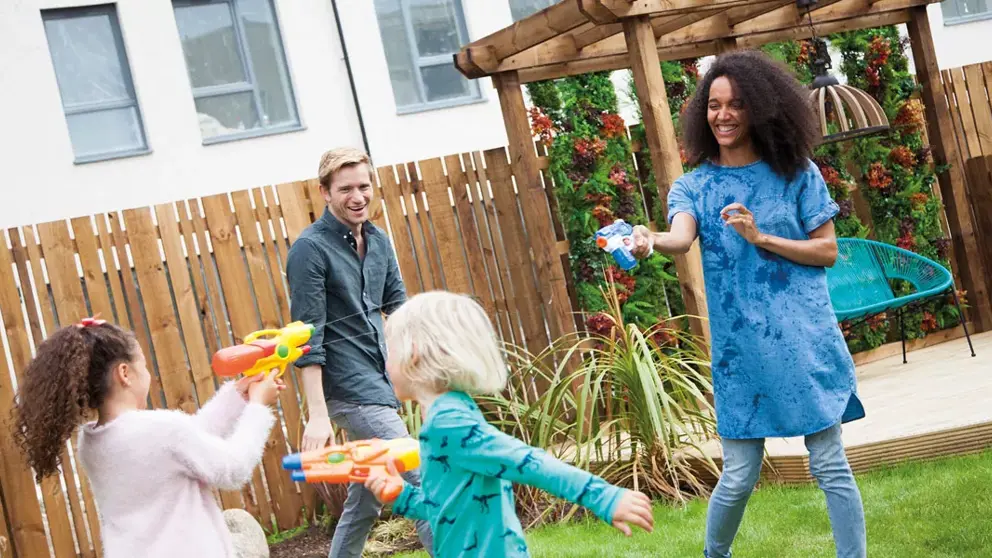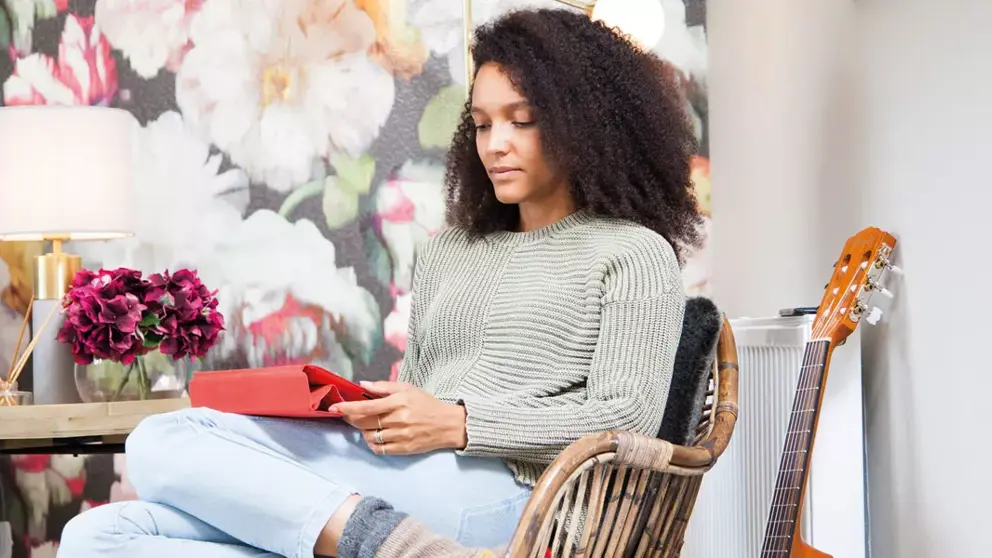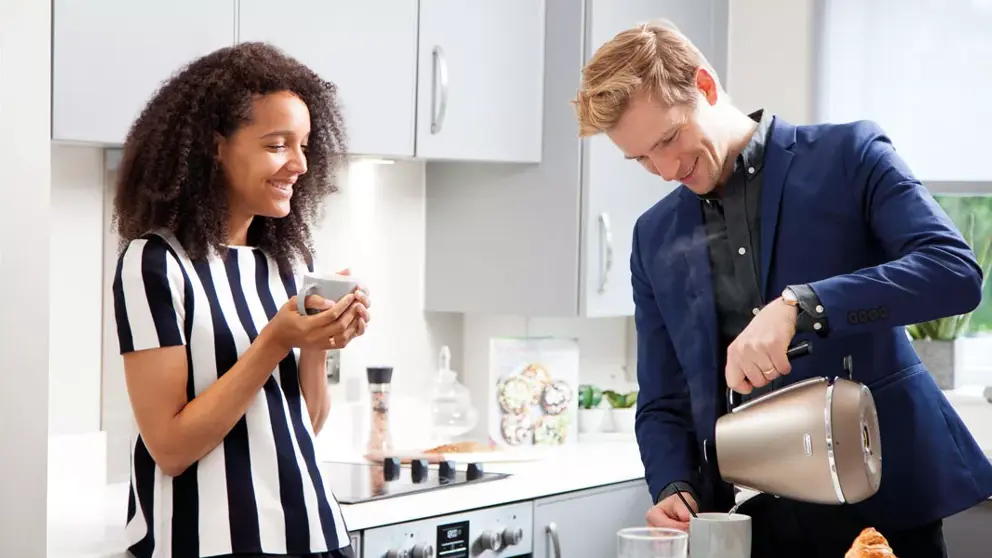Mythbusting the rules of Shared Ownership
31 August 2023
If you’re thinking of buying a brand-new home, you might want to spend some time familiarising yourself with the rules of Shared Ownership – it could turn out to be time well spent.
The government-backed Shared Ownership scheme can be a great route to home ownership for those who might otherwise struggle to buy a brand-new home outright. And for those who are planning to buy new, Shared Ownership provides an opportunity to make your move sooner, thanks to a lower – and more saveable – deposit.
Sounds simple, right? It is. Unfortunately, this is a scheme that for many is still shrouded in mystery, with varying misconceptions about what Shared Ownership really means.
In this article, we attempt to separate the fact from the fiction, clarifying the rules of Shared Ownership and debunking the myths surrounding this affordable route to buying a brand-new place to call home.
In this section:
- Rule 1 – Shared Ownership is not just for first-time buyers
- Rule 2 – A deposit on a Shared Ownership home tends to be lower than buying the same property outright
- Rule 3 – Shared Ownership is available for family homes, not just apartments
- Rule 4 – You don’t have to share your Shared Ownership home with others
- Rule 5 – Shared Ownership homes are as well-built as other new-build homes
- Rule 6 – You can sell your Shared Ownership property if you want to
- Rule 7 – You may be able to eventually own 100% of your Shared Ownership home
- Rule 8 – You can decorate and make cosmetic changes to your Shared Ownership home
- Rule 9 – Paying rent and a mortgage doesn’t automatically make Shared Ownership more expensive
Rule 1 - Shared Ownership is not just for first-time buyers
While it’s true the Shared Ownership scheme is universally popular with those looking to step onto the property ladder for the first time, in actual fact anyone who meets the scheme’s eligibility criteria is free to buy a Shared Ownership home.
That includes people who might have owned a home before – or are selling their existing home – but for whatever reason cannot afford to buy their next property through a standard purchase. In addition, those who already part-own a Shared Ownership home can usually sell this property and buy a new Shared Ownership home elsewhere, should they choose to.
The other main eligibility requirement – besides not owing a property already – relates to household income and applies to everyone buying a Shared Ownership home. In short, your annual income needs to be less than £80,000 a year, or £90,000 if you live in London.
Our Guide to the Shared Ownership process goes into more detail about Shared Ownership eligibility and the application process.
Rule 2 – A deposit on a Shared Ownership home tends to be lower than buying the same property outright
What some people don’t realise is that when you buy a Shared Ownership home, your deposit starts from just 5% of the share you buy (not the full property price), which is clearly much less than what your deposit would be if you bought your home through a standard purchase.
The obvious benefit to this is that it’s going to be much quicker – and much more achievable – to save up the amount you need to make your move.

Rule 3 – Shared Ownership is available for family homes, not just apartments
In the past, those buying through the Shared Ownership scheme could only choose a home where the number of bedrooms matched the size of their household plus one additional bedroom. This might explain why some people believe that Shared Ownership homes have to be apartments.
But this simply isn’t the case. For example, at our developments across the UK you can choose from a wide range of properties, from one and two-bedroom apartments to two, three and four-bedroom houses with gardens and parking included – depending on your unique requirements and of course, your budget.
Rule 4 – You don’t have to share your Shared Ownership home with others
There’s a common misconception with Shared Ownership that you will have to share your property with people that you don’t know!
Please be assured this isn’t a requirement of the scheme. You only share the ownership of your home with the housing association or housing development company from whom you’ve purchased your share – usually between 25% and 75% of the property price.
You do need to pay a subsidised rent on the share you don’t own, but the fact that you don’t own this share (which might change if you decide to increase your share in the future) doesn’t entitle anyone other than you and your immediate household to live in your home.
Rule 5 – Shared Ownership homes are as well built as other new-build homes
There is no reason to think your Shared Ownership home will be of an inferior quality to other new-build properties.
At Places for People, it’s certainly the case that all of our homes are built to the same high levels of quality and workmanship, so you can be confident that all our homes adhere to the same exacting standards.

Rule 6 – You can sell your Shared Ownership property if you want to
Contrary to what some people believe, you can absolutely sell your Shared Ownership home, should you choose to.
If you decide to sell your Places for People Shared Ownership home but don’t own 100% of the property, you will need to let us know so we can find a buyer to take over your share. If however, you have increased your share up to 100% (an option available on some but not all Shared Ownership homes) and providing you can acquire the property freehold, then you will be able to sell your home as normal on the open market.
When you do come to sell your home, it's possible it will have increased in value, although any profit you make will be proportionate to the share that you own.
Rule 7 – You may be able to eventually own 100% of your Shared Ownership home
With Shared Ownership, it isn’t always the case that you won’t one day be able to fully own your home.
You can usually buy more shares in your home later, as your finances allow, which allows you to increase your ownership and reduce your rent as well. This is known as 'staircasing'.
At Places for People, depending on which development you live at you can buy additional shares in your Shared Ownership home in increments of 1% upwards or in chunks of 10%+ at a time. And, again – depending on where you live – you might also be able to increase your ownership all the way up to 100%. Our expert team will be able to talk you through exactly how the staircasing process applies to you.

Rule 8 – You can decorate and make cosmetic changes to your Shared Ownership home
One of the great things about buying a Shared Ownership property is that – unlike renting – you’re free to put your personal stamp on your home, decorating it as you choose.
Within reason, you’re normally able to make minor cosmetic changes to your home as well, such as putting up shelves or changing light fittings.
If you want to make more major changes however, including changing windows and doors or adding an extension, unless you own 100% of your home you will need to obtain permission from your housing association or housing development company first – and potentially (whether or not you own your home outright) from your local authority’s planning department.
Rule 9 – Paying rent and a mortgage doesn’t automatically make Shared Ownership more expensive
Some people worry that having to pay rent as well as a mortgage makes living in a Shared Ownership home more expensive. But often that isn’t the case.
When you buy with Shared Ownership, your mortgage only covers the percentage share you own, making your repayments less than if you had bought your home outright. And the rent you pay on the remainder of the property is subsidised at between 2.5% and 2.75% per year, typically lower than renting privately.
This means that your total monthly repayments can sometimes work out cheaper than renting a similar property or buying the same home via the traditional route.
Plus, if you eventually staircase your home up to 100% (providing you have the option to do so), you will own your home entirely and won’t have to pay rent at all.
Why not find out more about how Shared Ownership mortgages work?

Find out more about Shared Ownership
Now that you’re clear on the rules of Shared Ownership, you’re better placed to make an informed decision about whether buying a Shared Ownership home is really right for you.
At Places for People, our friendly, expert team can walk you through the entire process, step by step. We can also recommend independent financial advisors who are Shared Ownership specialists.
We want our Shared Ownership homeowners to be part of sustainable, inclusive and thriving Communities and we’d love to answer any questions or concerns you might have.
Get in touch now to start the exciting journey towards buying a brand-new place to call home.

